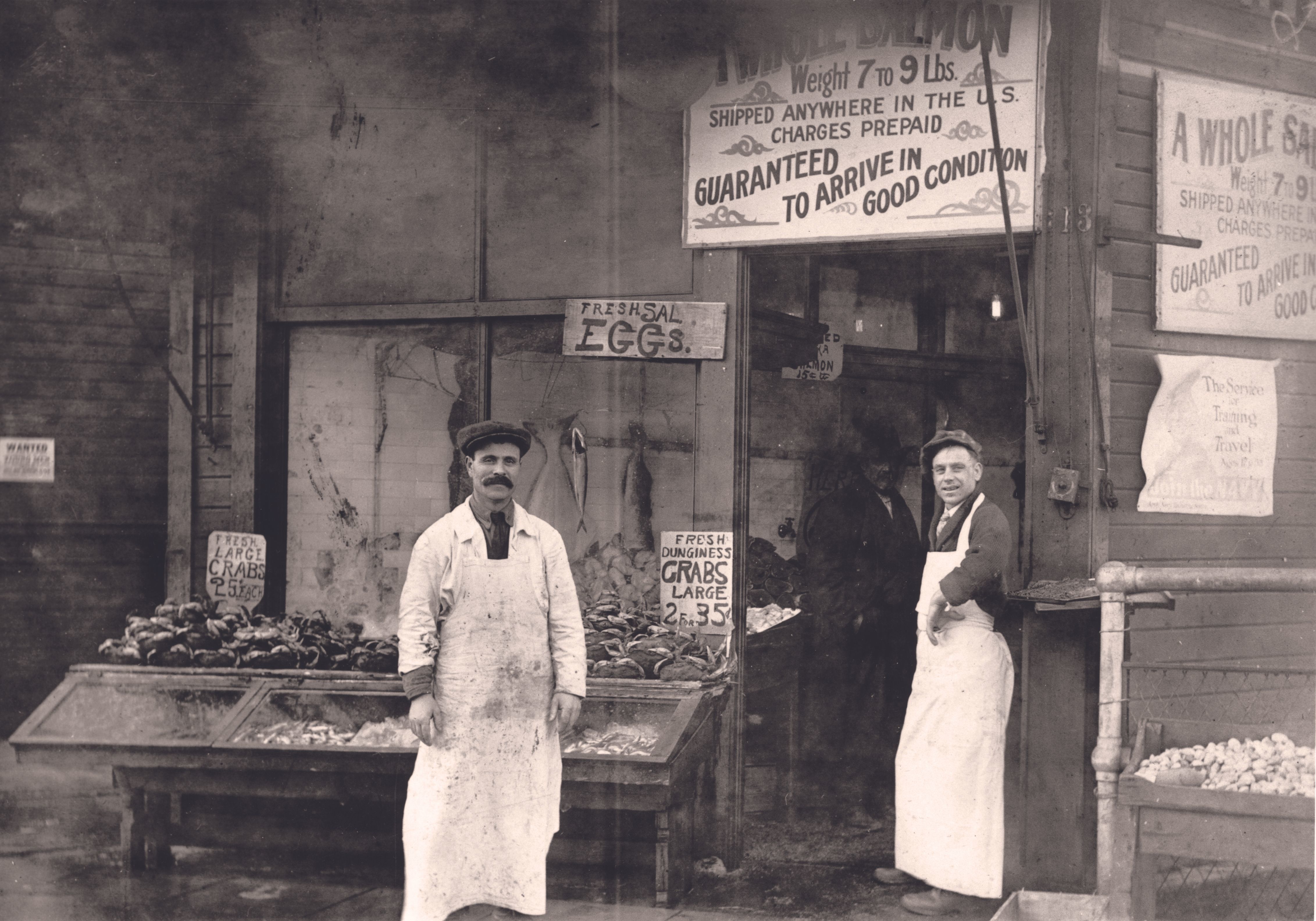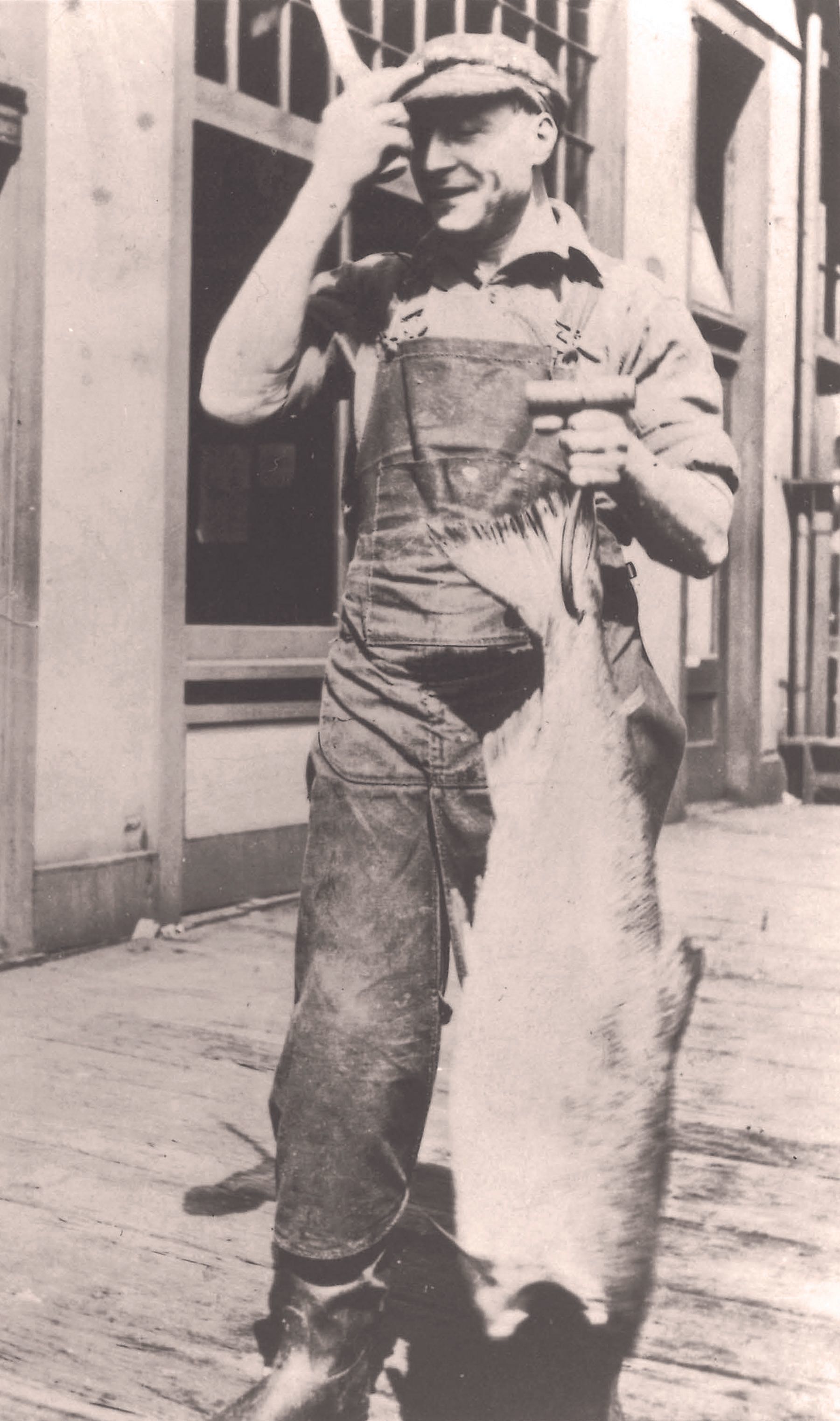Navigate the Exhibit
The Road from Spain to Seattle
》Sephardic Jews and Pike Place Market
Seattle's Sephardic Community of Today
Seattle Historic Sephardic Jewish Tour
-
In 1902, Solomon Calvo, left, was one of the first two Sephardic Jews ever to step foot in Seattle. He operated Waterfront Fish & Oyster, which supplied product to some of the earliest fishmongers at Pike Place Market. (1914) Photo Courtesy: University of Washington Libraries, Special Collections, UW1092

In 1902, Solomon Calvo, left, was one of the first two Sephardic Jews ever to step foot in Seattle. He operated Waterfront Fish & Oyster, which supplied product to some of the earliest fishmongers at Pike Place Market. (1914) Photo Courtesy: University of Washington Libraries, Special Collections, UW1092
-
Living in a strange land and speaking an exotic language, Sephardic Jews could have found Seattle as just another stop along a prolonged exile that began with their expulsion from Spain in 1492. Having emigrated from Turkey and Rhodes in the Eastern Mediterranean, they found little in common with the Ashkenazi Jews from Central and Eastern Europe who had settled in Seattle before them.
Yet something about Seattle’s salt-air ambience felt right, and no place seemed more comfortable than Pike Place Market. The public market opened in 1907– five years after the first Sephardic Jews immigrated to Seattle. In the early days of the market, Sephardic Jews dominated fish and produce – both in selling and supplying product.
To them, Pike Place Market epitomized the New World, their introduction to America coming through the camaraderie of daily life behind the vendor stalls. The influence of Sephardic merchants is still felt today at the market, which continues to thrive as the longest continually run farmer’s market in the U.S.
-
Sephardic immigrant Nessim Chiprut holds a large fish, probably at Pike Place Market. (1920s) Photo Courtesy: University of Washington Libraries. Special Collections, UW1031

Sephardic immigrant Nessim Chiprut holds a large fish, probably at Pike Place Market. (1920s)
Photo Courtesy: University of Washington Libraries. Special Collections, UW1031


